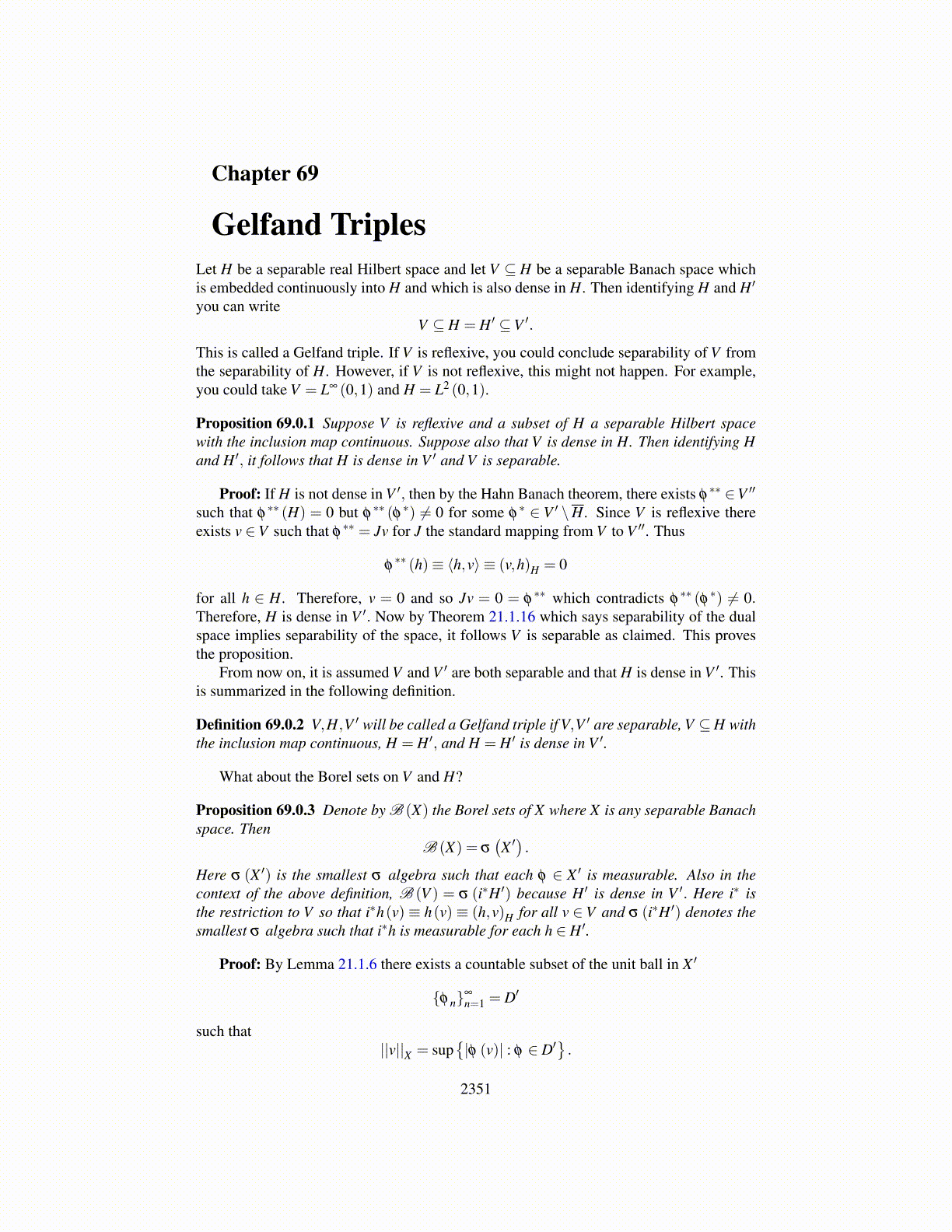
68.4. THE SKOROKHOD INTEGRAL 2351
limit. Using 68.4.25 which comes from the fact that the functions are adapted to the givenfiltration, ∥∥∥δ
(X[0,T ]G
lk
)−δ
(X[0,T ]G
lk+1
)∥∥∥2
L2(Ω)
= E
(mk+1−1
∑j=0
(Gl
k
(tk+1
j+1
)−Gl
k+1
(tk+1
j
))(W(
tk+1j+1
)−W
(tk+1
j
)))2
Consider a mixed term. To save on space, let ∆ j = Glk
(tk+1
j+1
)−Gl
k+1
(tk+1
j
)and say i < j.
ThenE((∆ j)(∆i)
(W(
tk+1j+1
)−W
(tk+1
j
))(W(
tk+1i+1
)−W
(tk+1i
)))By independence of the increments for W, this is
E(
W(
tk+1j+1
)−W
(tk+1
j
))E((∆ j)(∆i)
(W(
tk+1i+1
)−W
(tk+1i
)))= 0
and so the above reduces to
mk+1−1
∑j=0
E(
∆2j
(W(
tk+1j+1
)−W
(tk+1
j
))2)
=mk+1−1
∑j=0
E(∆
2j)
E((
W(
tk+1j+1
)−W
(tk+1
j
))2)
=mk+1−1
∑j=0
E((
Glk
(tk+1
j+1
)−Gl
k+1
(tk+1
j
))2)(
tk+1j+1 − tk+1
j
)= E
(∫ T
0
(Gl
k−Glk+1
)2dt)≤ 2
(E∫ T
0
(Gl
k−F)2
dt +E∫ T
0
(F−Gl
k+1
)2dt)
which is given to converge to 0 as k→ ∞. It follows that
X[0,T ]Glk→X[0,T ]F
in L2(Ω,L2 (0,∞,R)
)by construction and δ
(X[0,T ]Gl
k
)is a Cauchy sequence in L2 (Ω) .
Therefore, it converges to something in L2 (Ω) and since δ is a closed operator, that whichit converges to is δ (F).
However, by the definition of the Ito integral, δ(X[0,T ]Gl
k
)also converges to the Ito
integral∫ T
0 FdW .It follows that the Skorokhod integral is more general than the Ito integral but it gives
the Ito integral in the special case where the function is adapted. This also shows thatthe progressively measurable functions in L2 ([0,T ]×Ω) are in D(δ ), but as shown above,there are many other functions which are not progressively measurable but which are stillin D(δ ). Just consider, for example ∑
nk=1 Fhk where F is just a polynomial in W (h) for
h ∈ L2 (0,∞;R).